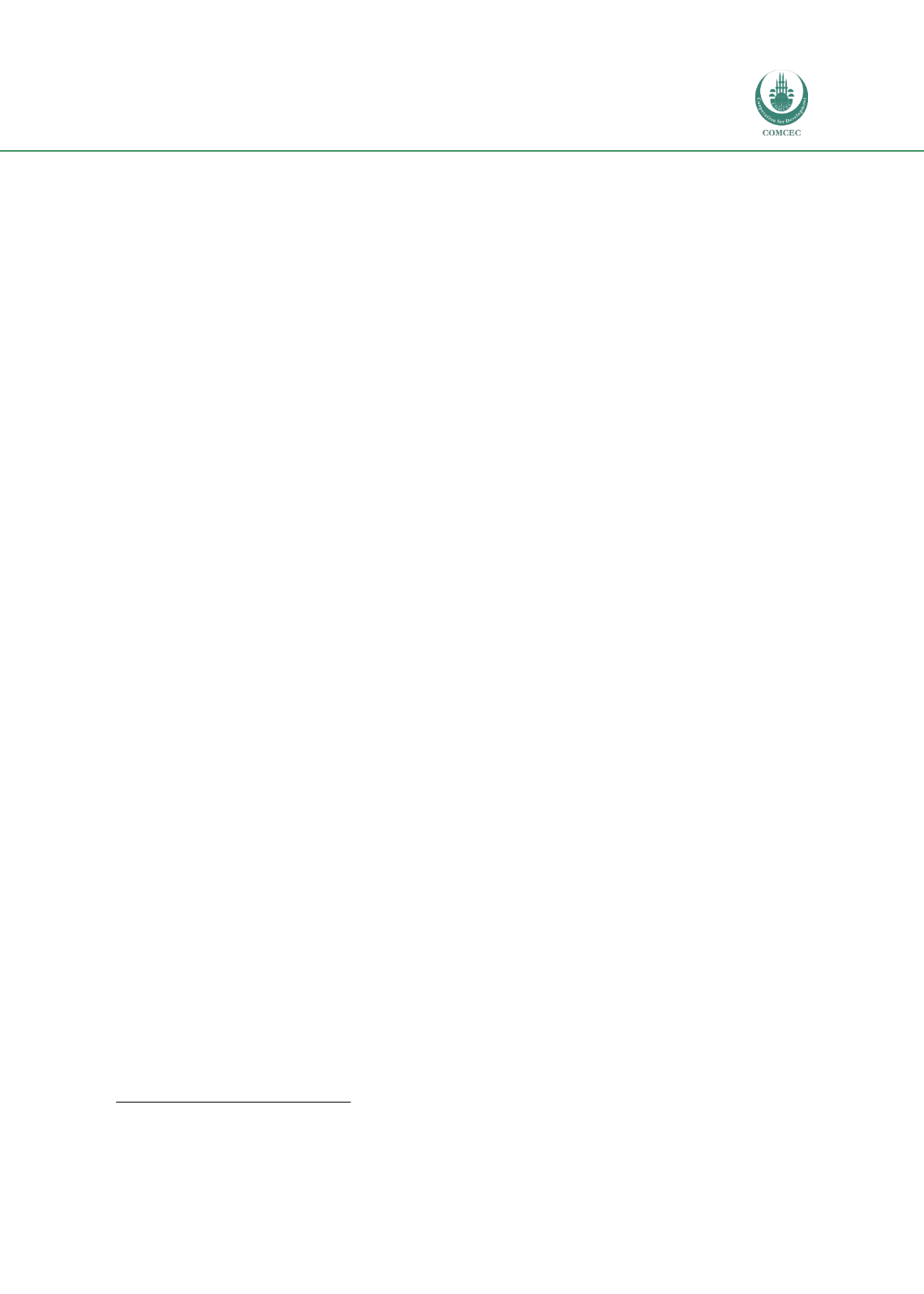

Improving Agricultural Market Performance:
Creation and Development of Market Institutions
61
Still other nations establish market legislation if and only as needed. Mozambique is one
example, and has a slate of different Ministerial orders addressing individual foodstuffs such as
wheat, corn, and even sunflower oils.
3.1 The Problems Agricultural Market Institutions Seek to Address
The OIC group of countries, consisting of 57 Member Countries and five observers, is highly
unequal in size, per capita GDP, and food security. The OIC includes some of the wealthiest
countries in the world, including Qatar, the UAE, Kuwait, and Saudi Arabia; several solidly
upper- or upper-middle income countries such as Turkey, Kazakhstan, Gabon, and Malaysia;
and some of the world’s poorest countries, including Sierra Leone, Mozambique, Mali, and
Burkina Faso.
The concerns of these countries with respect to agricultural production, market development,
and food security vary accordingly. However, agricultural and food market institutions
generally seek to address the following concerns, as outlined in the Conceptual Framework of
Chapter 1:
Combatting price volatility in order to provide both reasonable income for
smallholders and affordable prices for domestic consumers;
Stabilization of domestic markets by mitigating seasonal or cyclical fluctuations in
prices or supply, and also preventing exploitation and oligopoly;
Demand generation to protect farmer income and risk exposure (rural poverty
alleviation), while simultaneously promoting industry development; and
Ensuring food for increasing populations of urban consumers.
GCC Member Countries, which have great mineral wealth but limited agricultural production
capacity, have sought to reinforce their food security by acquiring large tracts of farmland in
other regions, especially Africa, though their ability to buy food commodities in international
markets remains unthreatened.
By contrast, food security in the poorest countries remains precarious. Undernourishment in
Mozambique, though lower than a decade ago, still affects more than one-fourth of the
population. The same is true of Uganda and Tajikistan. In many other countries, including
Bangladesh, Pakistan, Burkina Faso, Guinea, Guinea-Bissau, Sierra Leone, undernourishment
remains stubbornly high, affecting between 15% and 25% of the population
109
.
Political developments and climate change – including severe drought in the Sahel region of
Africa – play a significant part in food insecurity. Senegal, where undernourishment fell from
more than 28% to just over 14% between 2000 and 2012, saw its rate climb back to nearly
25% in 2015. Afghanistan, Iraq, Sudan, Somalia, Chad, and Yemen, beset by chronic armed
conflict, have persistent food insecurity and rates of undernourishment well over 20%.
On the other hand, Mali has experienced both drought and armed conflict, experienced a fall in
undernourishment from more than 12% in 2000 to less than 5% in 2015.
110
109
FAO (2015),
The State of Food Insecurity in the World 2015
, pp. 45-46, Rome: Food and Agriculture Organization of the
United Nations: Rome.
110
Ibid


















